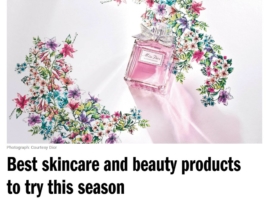Ignae’s Camellia Japonica Seed Oil from Furnas World-Class Collection of Camellias

Ignae’s Camellia Japonica Seed Oil from Furnas
World-Class Collection of Camellias
Inhibits the Initial Decompose of Collagen,
Leaving You with a Visibly Smoother Skin
The natural origins of Ignae, the thermal water and Camellia japonica seed oil, are sourced from Furnas Valley. Few places can provide the deep sense of wellness and relaxation that Furnas Valley offers, known for having one of the world’s highest concentrations of hydrothermal vents. Furnas Valley has hundreds of small springs and streams with different properties.
In the midst of this water system comes the Terra Nostra Garden which has over 200 years and is the place where hundreds of different species of camellias can be seen. As one of the sites of the most distinguished camellias collections in the world, Terra Nostra Garden is considered a “Camellia Garden of Excellence” by the International Camellia Society (ICS) 1 and is the source of Ignae’s thermal water and camellia seed oil as well.
Camellia oil we extract from the Furnas Valley and Terra Nostra Garden has the capacity to inhibit the initial decompose of collagen, to target glycation, to enhance natural moisturizing and to provide antioxidant protection. Let’s explore them as below.
Inhibiting the initial decompose of collagen Leaving you with a firmer complexion
Firstly, collagen is the key for firming skin. Terra Nostra Gardens Camellia japonica seed oil can inhibit Matrix metalloproteinase-1 (MMP-1) 2-3 which causes the initial decompose of collagen, inducing the synthesis of human type I procollagen. The end result is a youthful, healthier skin.
Secondly, glycation, one of the causes of skin aging, leads to a loss of protein function and impaired elasticity of tissues4. While Flavonoid glycosides 5-9 in Terra Nostra Gardens Camellia japonica seed oil possess inhibitory activity against advanced glycation end-products formation.
Enhancing natural moisturizing and antioxidant
Azorean camellias are incredibly rich in a powerful polyphenol10 – epigallocatechin gallate (EGCG) which has been proven to increase the expression of natural moisturizing factor-related genes.
It also reduces trans-epidermal water loss (TEWL), keeping your skin moisturized for a longer period of time.
Camellia japonica seed oil, which is present in a very high concentration in all ignae range, is richer in antioxidants than almost any other botanically derived oil. It’s high concentration of oleic acid, vitamins A, B, D, E and Omega 3, 6 and 9 makes its molecular weight an ideal match for your skin.
Ignae is the result of years of researching the best anti-aging ingredients available on the market, hidden deep in the lush nature of the Azores. An ecosystem like no other, home to many different species from all around the World, the Furnas Valley and the Terra Nostra Gardens are the birthplace of Ignae. All our products are infused with a high concentration of this wonderful, precious ingredient. And ignae uses a biotechnological process to capture the benefits of this amazing plant and deliver it to your skin.
Source: Ignae
Ref:
- Parque Terra Nostra, European Route of Historic Gardens https://europeanhistoricgardens.eu/en/portfolio-item/terra-nostra-park/
- MMP-1, Matrix metalloproteinase-1 also known as interstitial collagenase.
- “化籹品成分之檢測與評估方法研究”,嘉南藥理科技大學專題研究計畫成果報告, 中華民國 95 年 2 月 28 日, http://lib.cnu.edu.tw/teacherproject/project/94CNIC9402.pdf
- The glycation process leads to a loss of protein function and impaired elasticity of tissues. NCBI https://www.ncbi.nlm.nih.gov/pmc/articles/PMC5643203/
- “Flavonoids, one of a group of naturally occurring phenolic compounds many of which are plant pigments.” Dictionary of Science, Oxford University Press, Fifth Edition, 2005.
- Flavonoids, a group of natural substances with variable phenolic structures, are found in fruits, vegetables, grains, bark, roots, stems, flowers, tea and wine. NCBI https://www.ncbi.nlm.nih.gov/pmc/articles/PMC5465813/
- Phenols, organic compounds that include phenol, are similar to alcohols but form stronger hydrogen bonds. Phenols are common in nature. Many of the more complex phenols used as flavourings. phenol | Definition, Structure, Uses, & Facts | Britannica
- Glycoside, any of a wide variety of naturally occurring substances in which a carbohydrate portion, consisting of one or more sugars or a uronic acid (i.e., a sugar acid), is combined with a hydroxy compound. Many glycosides occur in plants, often as flower and fruit pigments. https://www.britannica.com/science/glycoside
- Glycoside are widely distributed in plants. Many plants store chemicals in the form of inactive glycosides. These can be activated by enzyme hydrolysis which causes the sugar part to be broken off, making the chemical available for use. https://en.wikipedia.org/wiki/Glycoside
- Polyphenol are a large family of naturally occurring organic compounds and abundant in plants and structurally diverse. Wiki https://en.wikipedia.org/wiki/Polyphenol


